2024 ASLA地标奖:Xochimilco生态公园
Grupo de Diseno Urbano S.C.
项目陈述
Project Statement
Xochimilco 于 1988 年被联合国教科文组织列为世界遗产,是一个需要保护的独特之地。这片文化景观包含“浮岛农业”(CHINAMPAS),这是一种高效可持续的农业系统,其历史可以追溯到前哥伦布时期,并延续至今。针对 3000 公顷浮岛农业区的规划包括一个生态公园、植物市场和体育公园。公园中的湿地和湖泊为超过 200 种本地及迁徙鸟类提供了重要的栖息地。
公园于1993年开放,斩获多项大奖,并在全球范围内广受关注,成为墨西哥城的标志性项目。它成功地证明了生态与设计并非天然对立。近年来,公园因常年缺少维护而出现退化,但在经过全面修复后,如今已焕然一新,成为一处深受欢迎的公共空间。
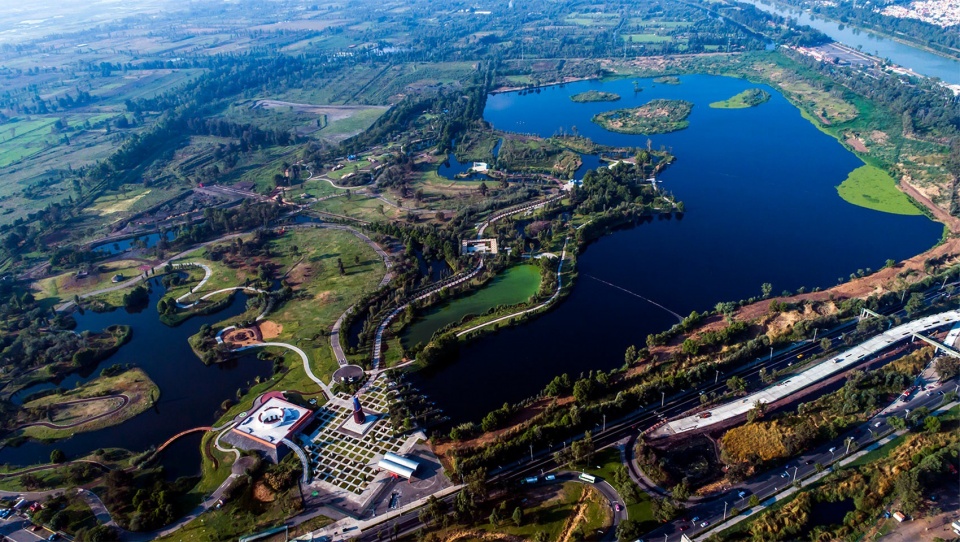
项目说明
Project Narrative
Xochimilco湖区的保护与修复是墨西哥城政府在该地区被列为世界遗产后启动的大型综合项目的一部分。针对3000公顷浮岛农业区的规划包括建设生态公园、植物市场和体育公园。Grupo de Diseno Urbano S.C.团队负责设计和建造 Xochimilco生态公园(PEX)。
公园占地277公顷,被南环路(Anillo Periférico Sur)分为两部分:北部区域包括植物和花卉市场及Cuemanco体育公园;南部区域则涵盖 Xochimilco生态公园及与浮岛农业区相连的Huetzalin和Acitlalin湖。
公园内的湿地和湖泊生态系统不仅支持超过200种本地及迁徙鸟类,还融入了体育和休闲活动区域、植物市场和一个场地博物馆。自 2004 年以来,Xochimilco湿地被列入《国际重要湿地公约》(RAMSAR Sites)名录,成为全球湿地保护的典范。
公园的设计初衷是通过恢复墨西哥谷地的水文和地理历史,将公园融入更广阔的自然景观中。公园的主轴线还引导游客将视野聚焦于自前哥伦布时期以来被视为神圣的山脉和丘陵。
公园于 1993 年开园,获得包括哈佛绿色城市设计奖在内的多项国际荣誉,并在全球范围内受到报道,成为墨西哥城的象征性项目。它成功展示了生态与设计的深度融合。然而,近年来公园因维护不力而逐渐退化,亟需全面修复。
在2019至2020年间,Grupo de Diseno Urbano S.C.团队参与了对公园的全面修复,重点在于湿地和湖泊系统的复原,包括通过清淤和地形优化恢复其生态功能。
修复工作种植了1500多棵本地树种,这些树种均经墨西哥城市环境秘书处批准。同时,对公园内约2.5万棵树木中的20% 进行了病虫害治理和林业清理。新增了一个教学浮岛农业区,以及由艺术家Luis Palacios设计的生态艺术地景项目“偶然花园”。此外,还设计了新的标识系统及由生物学专家提供的野生动植物与植物解说面板。
公园的慢跑道和自行车道得到了显著扩展,同时新增了一个更大的儿童及家庭活动区,提供划船设施以及传统的 Xochimilco“平底船”(Trajineras),这些船只常用于家庭聚会和野餐。
如今,Xochimilco生态公园已恢复了昔日的辉煌,不仅吸引了多种本地及迁徙鸟类,还成为墨西哥城大都会地区,尤其是南部居民的重要休闲地,为家庭、跑步者、骑行者以及观鸟爱好者提供了理想的开放空间和自然体验。
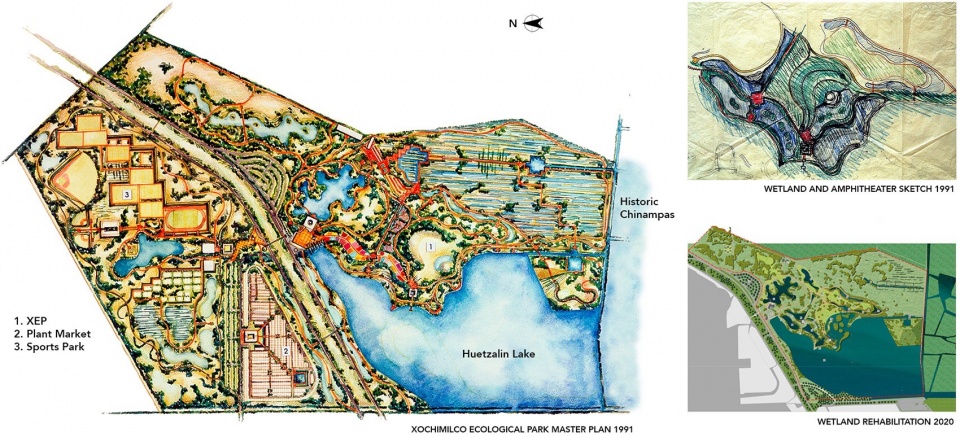
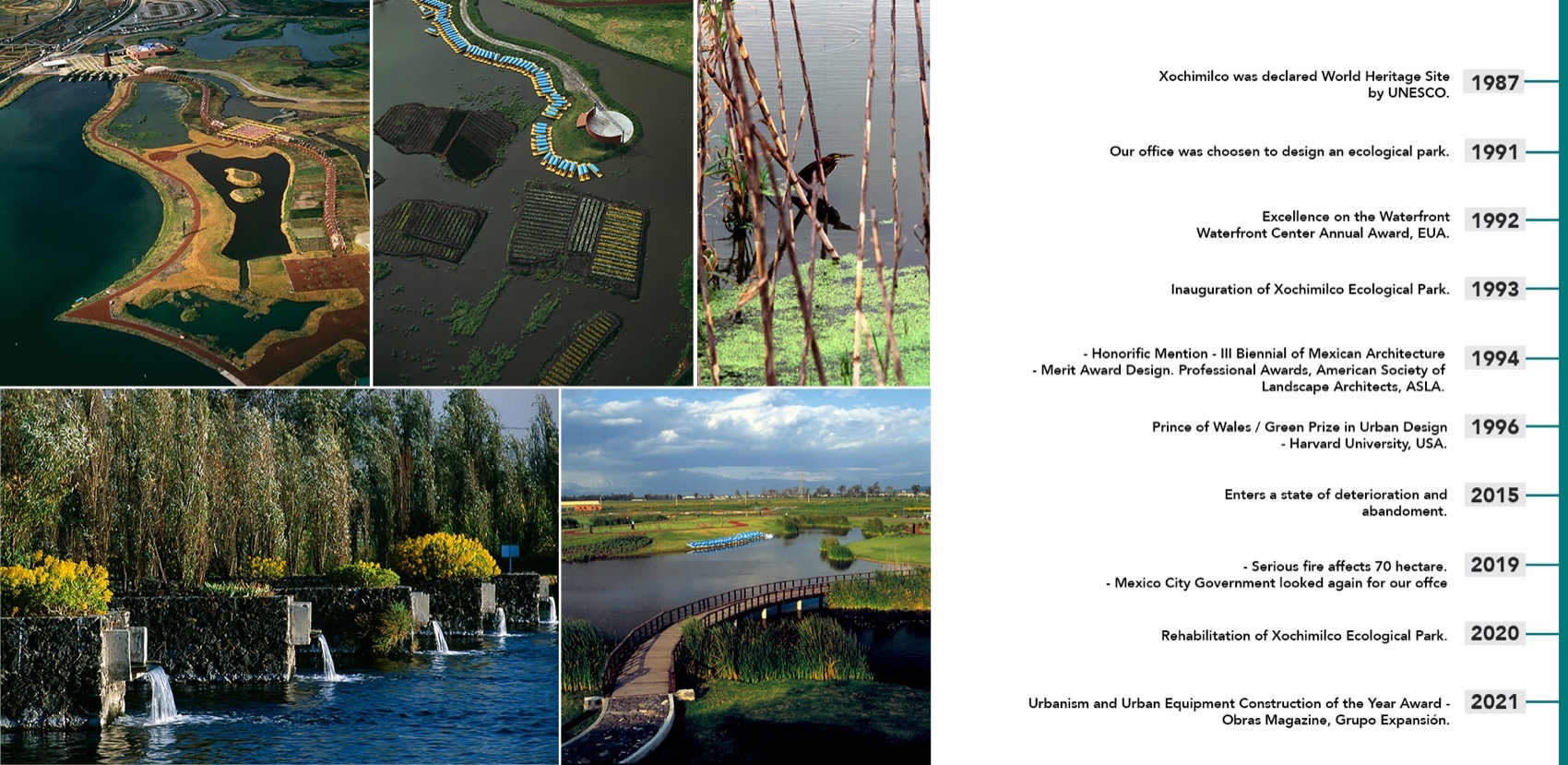
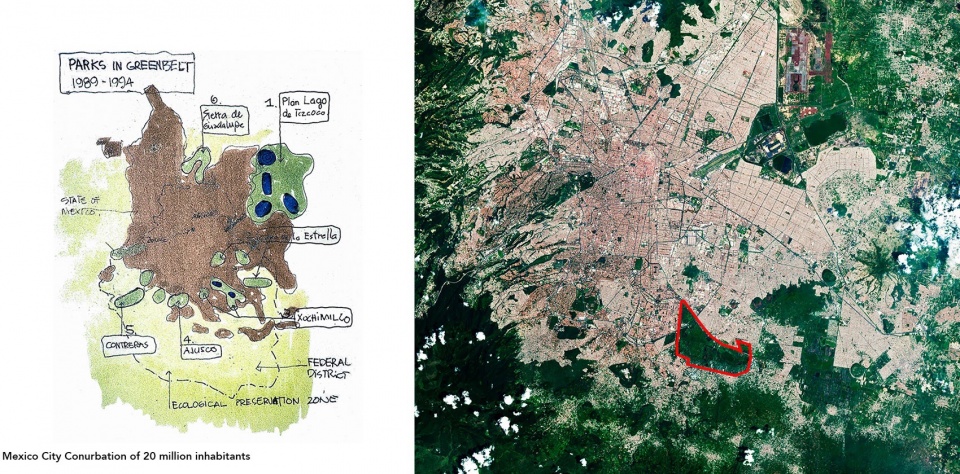
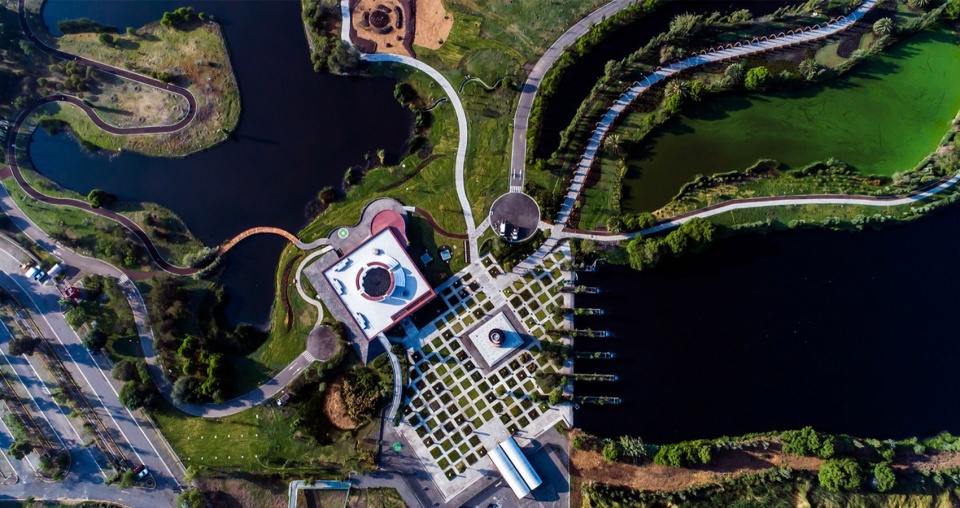
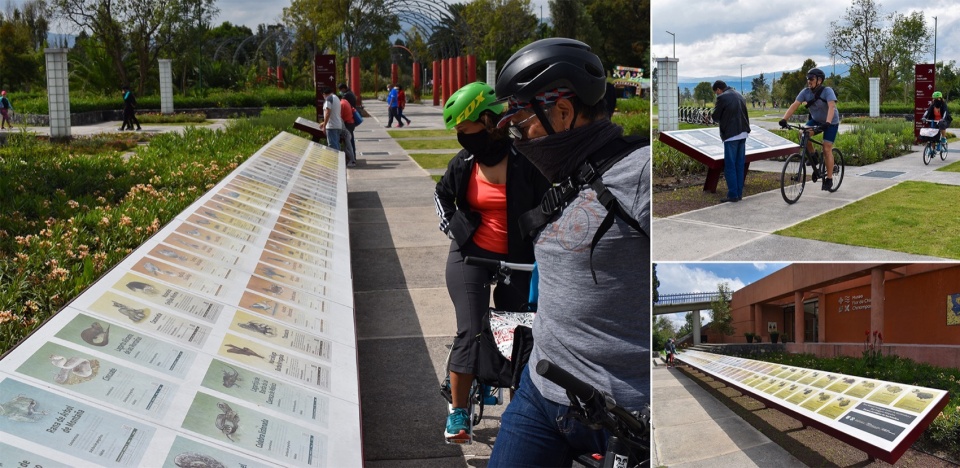

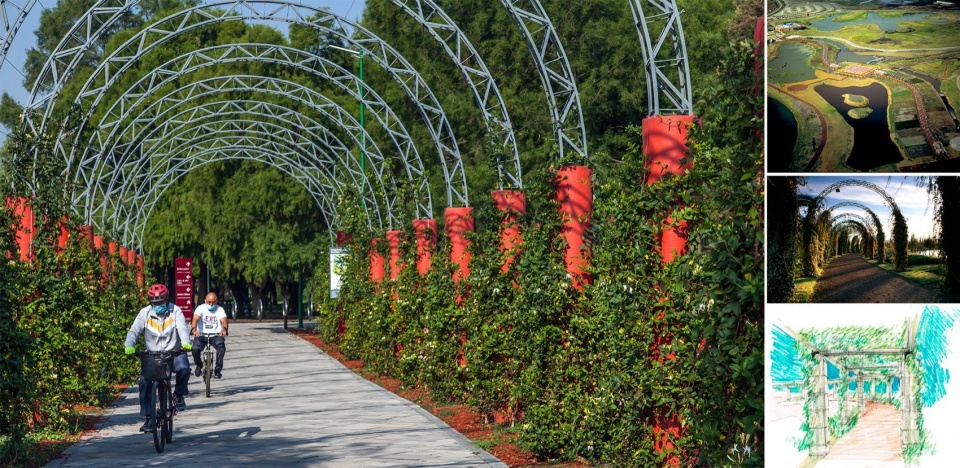

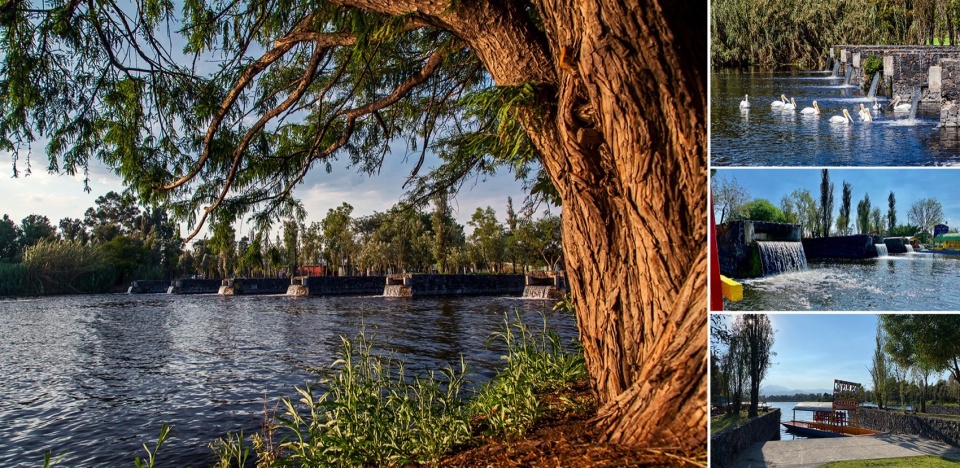
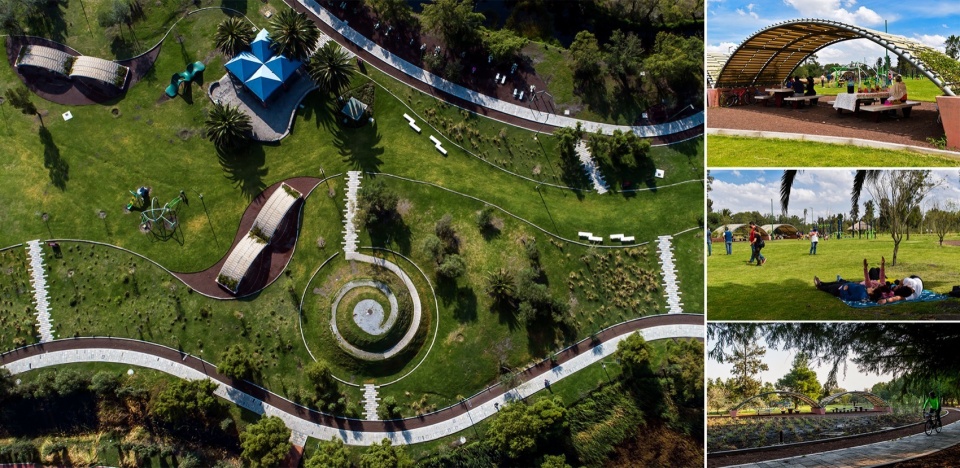
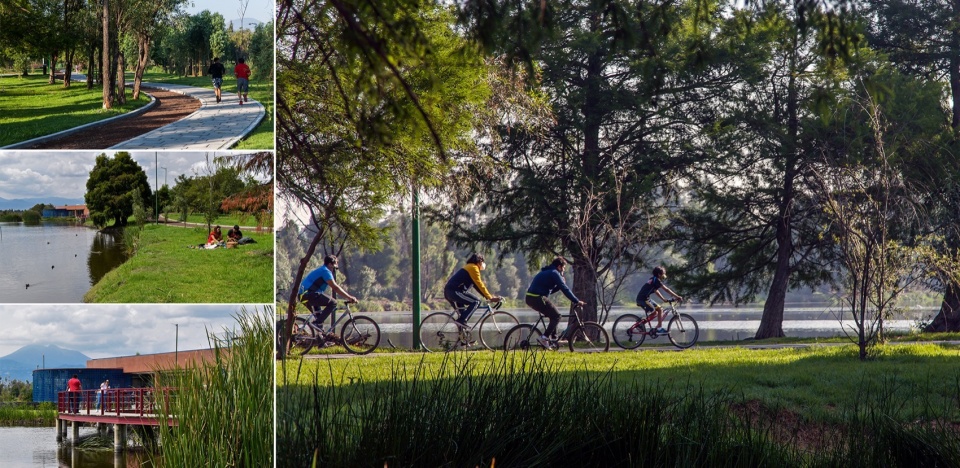
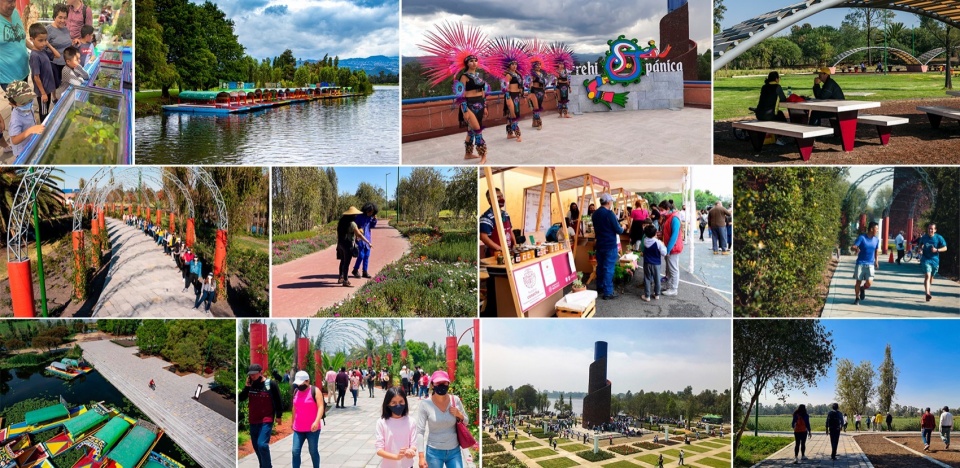
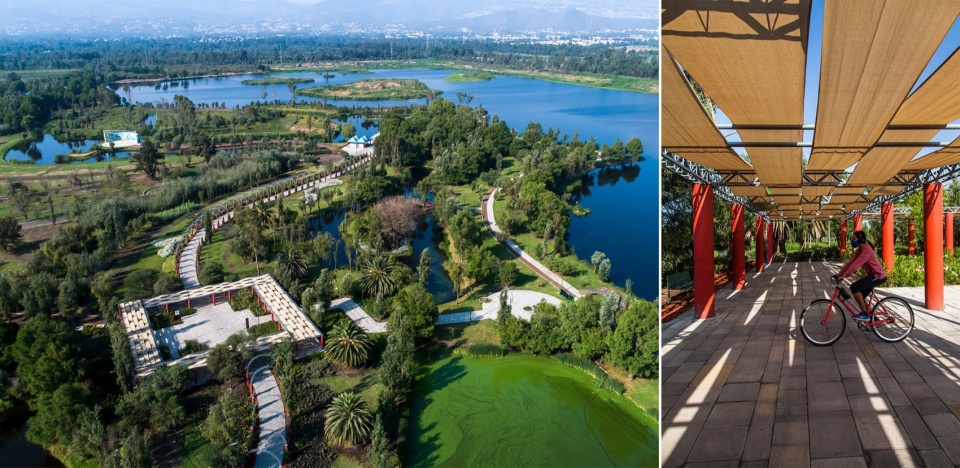
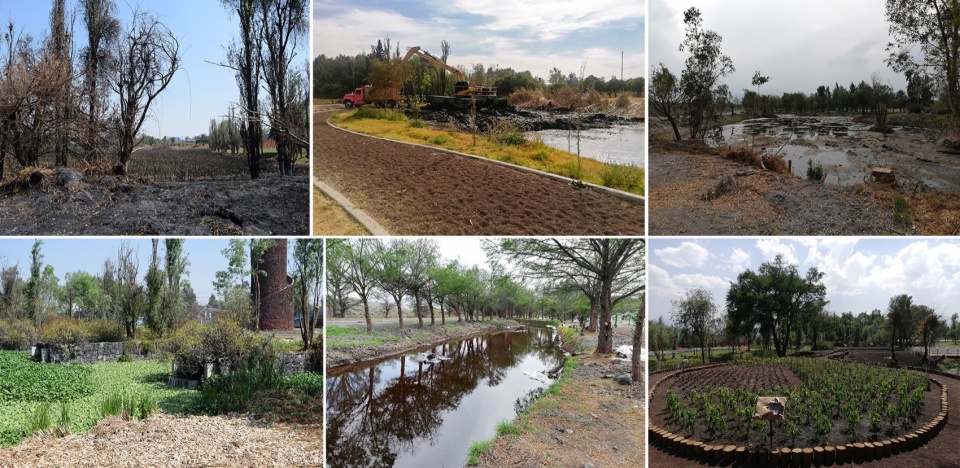
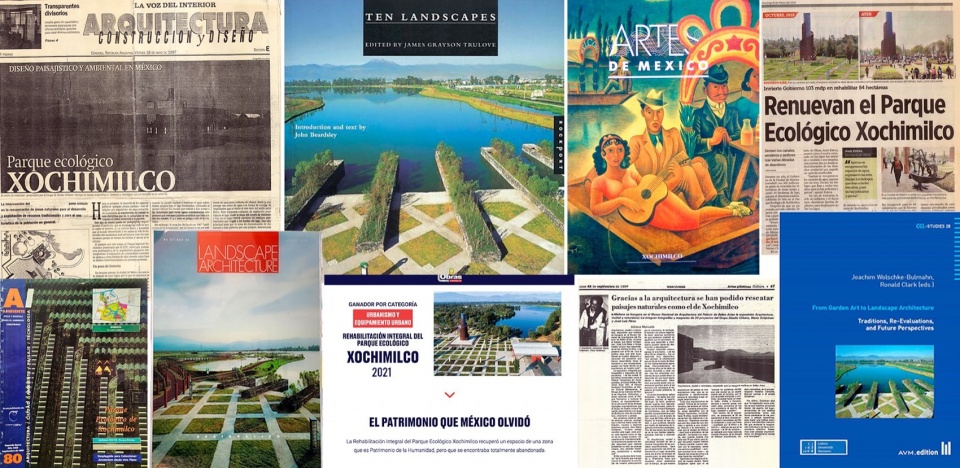
Project Narrative
The rescue and rehabilitation of Xochimilco´s lacustrine zone was part of a huge integral project, developed by the Mexico City Government, after being declared World Heritage Site in 1988. The Plan for the 3,000 H. chinampa district included an ecological park, a plant market and sports park. Our office was in charge for the Xochimilco Ecological Park (PEX).
The 277 hectare park is crossed by Anillo Periférico Sur road, bifurcating it into two sections: The northern section with the Plant and Flower Market and the Cuemanco Sports Park, and the southern section where the Xochimilco Ecological Park and the Huetzalin and Acitlalin lakes are located, which are attached to the Xochimilco chinampa area.
The Park, with wetlands and lakes, is an ecosystem sustaining more than 200 species of native and migratory birds, also included sports and recreational activities, a plant market and a site museum. Since 2004, the wetlands of Xochimilco have been part of the RAMSAR sites list, a designation established by the Convention on Wetlands of International Importance, including the park.
The original concept was to visually connect the park to its landscape territory recovering the hydraulic and physiographic history of the Valley of Mexico. The main axis of the park directs perspectives to iconic mountains and hills sacred since prehispanic times.
Opening in 1993, Xochimilco Ecological Park won many awards and recognitions including Harvard’s Green Prize in Urban Design. It was published worldwide, becoming an icon in Mexico City. The project showed that ecology and design were not intrinsically opposed.
The Park deteriorated in recent years and was subject to an extensive rehabilitation.
Between 2019-2020, our office participated in the integral rehabilitation of the park including the restoration of all the wetlands and lake systems, by a process of desilting and topographical refinement.
Planting of more than 1500 native trees with species approved by the Mexico City Environment Secretariat. Forestry sanitation in 20% of the approximately 25,000 trees. A didactic chinampawas added, as well as the “Adventitious Garden”, an ecological-artistic land-art project designed by the artist Luis Palacios. New signage and interpretation panels of wildlife and plants were designed by biology experts.
In particular, the jogging and cycling paths were extended as well as the inclusion of a major area for children and family recreation, boating and the traditional “Trajineras” flat bottom boats of Xochimilco, used for family picnics and parties.
Today, the Xochimilco Ecological Park has recovered its magnificence, attracting both birdlife and migratory birds as well as families, runners, bicycling and recreational and bird observers from all of the Metropolitan Area of Mexico City but in particular from the south region’s population, critically needing open space recreation and wildlife contact.
Project Credits
Mario Schjetnan Garduño, Landscape Architecture
Secretaría del Medio Ambiente, Manage, monitor and control
More: ASLA,Grupo de Diseno Urbano S.C.
扫描二维码分享到微信